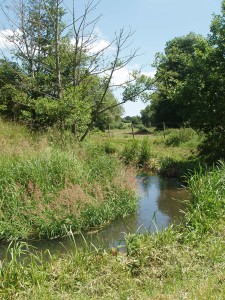
Like most ecologists and nature conservation professionals, I am shocked by the short-sighted nature of the proposed planning reforms being put forward in the National Planning Policy Framework (NPPF).
There are many problems with the NPPF (such as the gross distortion in favour of economic growth, which is not actually the role of the planning system) but I want to focus on the one which few people are talking about. The NPPF makes no mention whatsoever of protecting Local Wildlife Sites.
There are 40,000 Local Wildlife Sites in England. These have been surveyed, analysed, selected and monitored over the last twenty years or so, much of the work being done by volunteers, charities and local communities.
Local Authorities across England have formally recognised local wildlife sites in planning policies, protecting them from development. Many of them have provided grants for their positive management. Until this year there was a National Indicator on the condition of local wildlife sites as a proxy measure for state of biodiversity in the wider countryside.
There is a sophisticated system, (recognised and promoted by Defra and Natural England), for managing local wildlife sites systems. These are run locally, often by Wildlife Trusts, and are a well-established part of the fabric of nature conservation efforts.
In Hampshire and on the Island we have a wonderful network of more than 4,500 local wildlife sites, covering flower-rich meadows, chalk streams, ancient woodlands and heaths. Many of these habitats have no other form of protection.
More than half of the UK’s priority habitats lie outside of statutory sites such as SSSIs. This gives local wildlife sites a critically important role to play in achieving our biodiversity commitments under Nagoya and Biodiversity 2020. They also form stepping stones and links for creating ecological networks, helping to restore and deliver vital ecosystem services for people – a key aim of the Natural Environment White Paper.
How, then can the NPPF completely ignore local wildlife sites – which have no protection other than through the planning system. Without their explicit recognition in the NPPF they will surely be fair game for developers.
If you are not convinced, just click the links below to find out more about the local wildlife sites in Hampshire, my local patch. Their future is now very uncertain.
Join the debate and have your say #NPPF @Debbie_Tann @HantsIWWildlife

River Loddon local wildlife site, a chalk stream rich in biodiversity
Local wildlife sites help to buffer and connect natural areas, providing ecological networks and increasing resilience of biodiversity to pressures of land use and climate change.
Over 50% of the UK’s priority habitat identified under the UK Biodiversity Action Plan lies outside national nature conservation designations. This gives local wildlife sites a vital role in helping to meet UK biodiversity targets by protecting a large part of this very important resource.

Woodland local wildlife site near Swanwick
Local wildlife sites contribute to the quality of life and health and wellbeing of the community. They provide attractive countryside and important open space in urban areas. Sites also provide excellent opportunities for recreation and education.
http://www3.hants.gov.uk/sinc_web__2_.pdf
http://www.telegraph.co.uk/earth/hands-off-our-land/8786741/Planning-rules-increase-threat-to-thousands-of-square-miles-of-wildlife-habitat.html
http://www.defra.gov.uk/rural/protected/nationally/local-sites/
http://www.naturalengland.org.uk/ourwork/conservation/designatedareas/localsites/default.aspx
 Like most ecologists and nature conservation professionals, I am shocked by the short-sighted nature of the proposed planning reforms being put forward in the National Planning Policy Framework (NPPF).
Like most ecologists and nature conservation professionals, I am shocked by the short-sighted nature of the proposed planning reforms being put forward in the National Planning Policy Framework (NPPF).

